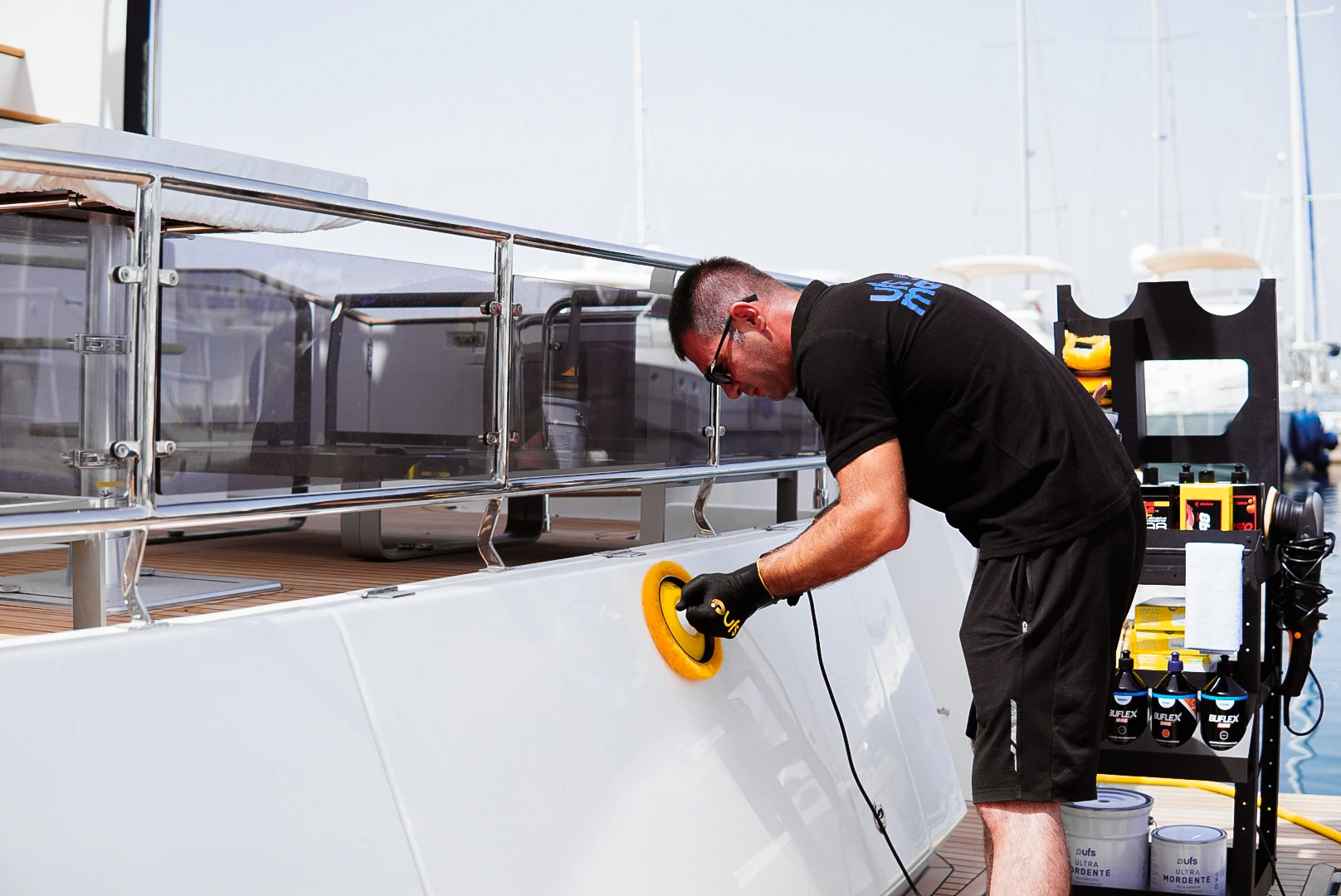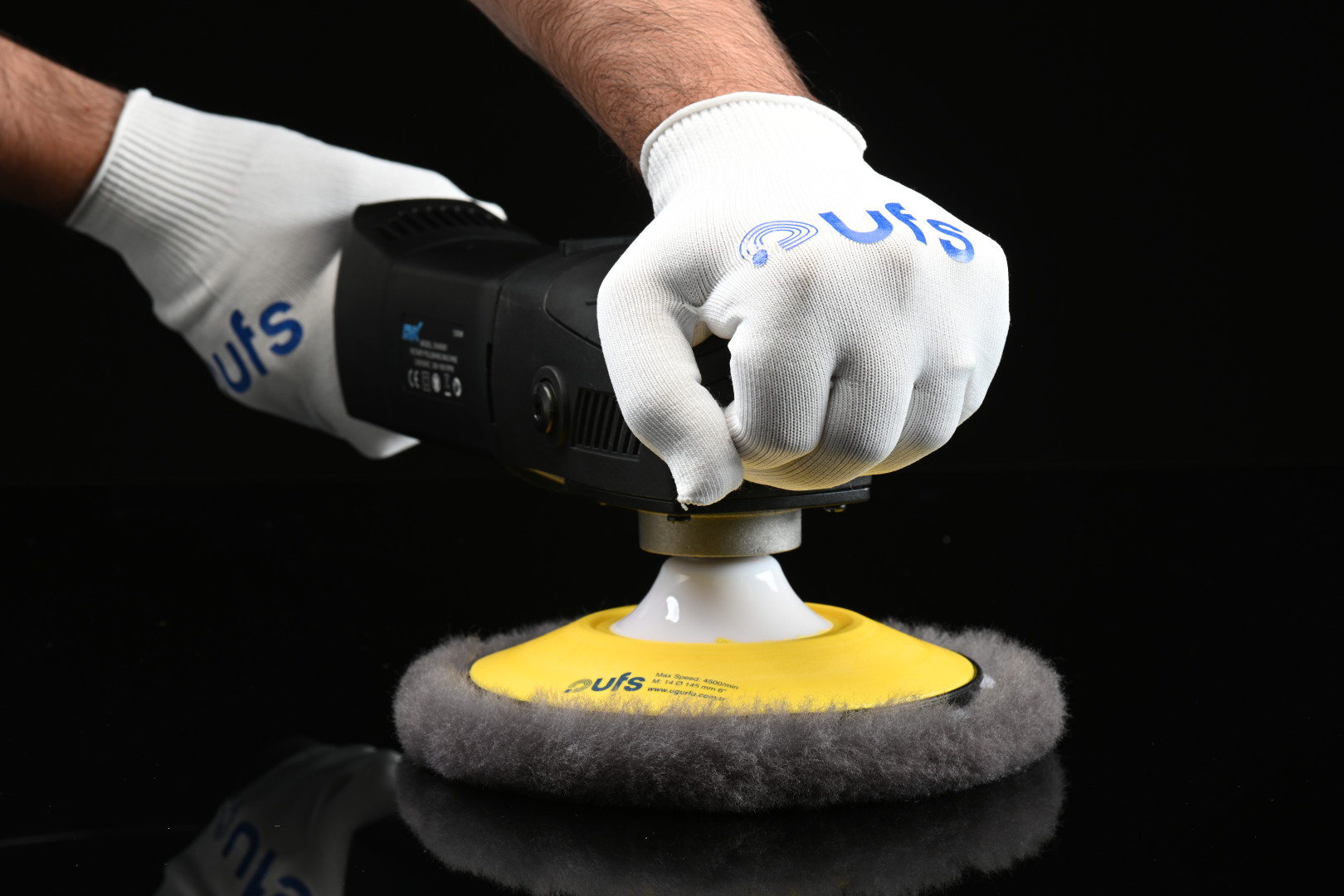
Yachts and boats are indispensable tools for sea enthusiasts. Keeping the surfaces of these vessels smooth and shiny is crucial, both for aesthetics and to enhance the durability of the surface. Therefore, the use of high-quality polishing products such as wool polishing pads is necessary. The use of polishing pads on yachts and boats plays a critical role in maintaining the surface and preserving its aesthetic value. So, how is the use of polishing pads on yachts and boats carried out, and what should be considered during this process? In this article, we will discuss the intricacies of using polishing pads for yachts and boats.
The Art of Polishing Yachts and Boats
Polishing yachts and boats is a process performed to smooth the surface and enhance its shine. This process not only preserves the aesthetic appearance of yachts and boats but also ensures the longevity of their surfaces. During the polishing process, scratches, stains, and oxidation are removed from the surface. The polishing pad used in this process helps protect the surface and achieve an excellent shine. Proper polishing also makes the yacht or boat more resistant to sea conditions. When performed regularly, the surfaces of yachts and boats appear more elegant and retain their value. Therefore, polishing done with the right materials is indispensable for yacht and boat owners. Additionally, the quality of the pads and other materials used during polishing is extremely important. When quality materials are used, unwanted marks and damage on the surface do not occur. This means more durable surfaces that require less maintenance in the long run. Polishing also positively impacts the performance of yachts and boats. Smooth and shiny surfaces reduce friction in areas that come into contact with water, which increases fuel efficiency.
Finding the Right Polishing Pad for Yachts and Boats
Finding the right polishing pad for yachts and boats is vital for a successful polishing process. The choice of polishing pad may vary depending on the type of surface, paint, and expected results. For example, softer pads are preferred for surfaces like fiberglass or gel coating, while harder pads may be used for metal surfaces. The density and hardness of the pad are determining factors in achieving the desired shine on the surface. The right pad selection not only increases the efficiency of the polishing process but also protects the surface. Using the wrong pad can lead to scratches or excessive wear on the surface. Therefore, it is important to consider the manufacturer's recommendations when choosing a pad. Additionally, professional users often use different types and densities of pads together to achieve the best result. For example, it is common to use a harder pad initially to remove deep scratches on the surface, and then to use a softer pad for the final polishing. The quality of the polishing pad is another factor to consider. Low-quality pads do not provide uniform polishing on the surface and may leave unwanted marks. A high-quality wool polishing pad is preferred for its durability and effective polishing properties. In conclusion, finding the right polishing pad will ensure that your yachts and boats remain long-lasting and aesthetically perfect.
Selecting the Pad Based on Surface Material
Selecting the pad based on the surface material is critical for the success of the polishing process. Since various surface materials are used on yachts and boats, each surface has its own specific requirements. For example, fiberglass and gel-coated surfaces yield better results with softer pads. These surfaces can easily be scratched or damaged when treated with hard pads. Metal surfaces, on the other hand, usually require harder pads because removing rust, stains, and oxidation from these surfaces requires a more intensive process. Similarly, wood surfaces can achieve excellent results with the correct pad selection. Excessively hard pads may scratch wood surfaces, so medium-hard pads are preferred.
Ceramic or painted surfaces require a delicate process. For these types of surfaces, it is best to use pads that are specially formulated. The fact that each surface has different polishing needs shows how important it is to choose the right pad. Moreover, the pad's compatibility with the surface prevents damage during the polishing process and ensures a brighter result. When selecting a pad based on surface material, the condition and needs of the surface should also be considered. For example, while a lighter polishing may be sufficient for a new and well-maintained surface, an older and worn surface may require a more intensive process. Choosing the appropriate pad for the surface’s requirements directly impacts the effectiveness and outcome of the polishing process.
The Importance of Pad Density and Hardness
The density and hardness of the polishing pad directly affect the quality of the polishing process. The density of the pad determines the distribution of pressure applied to the surface and the polishing effect. Denser pads have a greater impact on harder surfaces and deeper scratches, while less dense pads provide a softer polish on delicate surfaces. The hardness level determines the pad’s interaction with the surface. Soft pads are used on more delicate and fine surfaces, while hard pads are preferred for tougher and more durable surfaces.
A pad with the right density and hardness ensures uniform shine during the polishing process. Pads with incorrect density and hardness levels may leave unwanted scratches on the surface or render the polishing process inefficient. For instance, using a hard pad on a delicate surface like fiberglass can create deep scratches and damage the surface. Similarly, using a soft pad on metal surfaces may not provide the necessary polishing effect.
The density and hardness of the pad are also important at different stages of the polishing process. In the initial stage, harder and denser pads are used to remove deep scratches and stains on the surface, while softer pads are used in the final stage for fine polishing and final touches on the surface. This staged approach ensures both the cleaning and polishing of the surface. Additionally, the quality of the pad plays a critical role in this process. Low-quality pads do not provide uniform polishing on the surface and may leave unwanted marks.
In conclusion, selecting the correct density and hardness of the pad ensures the success of the polishing process and the longevity of the surface. Choosing the right pad for yachts and boats ensures that the surfaces remain both aesthetically and functionally perfect.
Polishing Process with Polishing Pads on Yachts and Boats
The polishing process on yachts and boats is a critical application aimed at smoothing the surface and enhancing its shine. The polishing process usually consists of several stages, and each stage is carried out using different materials and techniques depending on the condition of the surface and the desired outcome. In the first stage, deep scratches, stains, and oxidation are removed from the surface. In this stage, harder and denser pads are usually used. This stage is important for cleaning the surface and removing major defects.
In the second stage, finer scratches and defects on the surface are removed. In this stage, softer pads are used to make the surface smoother. This stage prepares the surface for the final polishing process, giving it a smoother appearance. In the final stage, the softest pads are used to increase the shine of the surface and make the final touches. This stage is crucial for achieving the surface’s brightest and smoothest finish.
During the polishing process, the quality of the products used and the application of correct techniques are of great importance. Poor-quality products or incorrect techniques can cause unwanted damage to the surface. Therefore, selecting the right products and using appropriate techniques determine the success of the polishing process. Additionally, it is important to regularly clean the surface during the polishing process and to use the pads correctly. The condition of the surface should be checked at each stage, and additional processes should be applied if necessary.
The polishing process with polishing pads on yachts and boats not only provides an aesthetic appearance but also increases the protection and durability of the surface. Regular polishing ensures the longevity of the surface and makes it more resistant to external factors. Moreover, smooth and shiny surfaces positively affect the performance of yachts and boats. Smooth and shiny surfaces reduce friction in areas that come into contact with water, which increases fuel efficiency.
The Benefits of Using Polishing Pads on Yachts and Boats
The use of polishing pads on yachts and boats provides numerous benefits in terms of protecting the surfaces and preserving their aesthetic value.
- The polishing process prevents oxidation, rust, and other environmental effects that may occur on the surface. This helps yachts and boats to be long-lasting and require less maintenance.
- Regular polishing removes small scratches and stains on the surface, ensuring that the surface always looks new and shiny. A bright and smooth surface contributes to the visual appeal and prestige of yachts and boats.
- Clean and well-maintained yachts stand out at sea and maintain their value. This is a significant advantage for yacht and boat owners.
- The polishing process makes the surface more resistant to external factors. The harmful UV rays of the sun, saltwater, wind, and other environmental factors can cause damage to the surfaces of yachts and boats. Regular maintenance with polishing pads helps prevent such damage.
- Smooth and shiny surfaces reduce friction in areas that come into contact with water. This contributes to less fuel consumption and more efficient operation of yachts and boats.
- Lower fuel consumption is also environmentally beneficial and reduces operating costs for yacht owners.
- Yachts and boats that undergo regular maintenance and polishing can be sold at higher prices in the second-hand market. This provides a significant return on investment for yacht owners in the long term.
- Thanks to the polishing process, the texture of the surface becomes smoother, making yachts and boats easier and safer to use.
- Polishing with the right materials increases the protection and durability of the surface, providing long-lasting use.
- Regular polishing ensures that yachts and boats remain both aesthetically and functionally perfect.
In summary, the use of polishing pads on yachts and boats provides numerous important benefits such as surface protection, aesthetic enhancement, fuel efficiency, and preservation of resale value. Regular polishing helps yachts and boats to be long-lasting and always in excellent condition.


.JPG)
.JPG)
